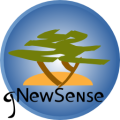By Samantha Rose Hunt First Look - After much skepticism due to poor company communication, I can admit I was extremely pleased to have the small CherryPal box hit my doorstep. So, I can confirm that the CherryPal does exist, well sorta. In fact I’m writing this article about my first impressions from the cloud computer. But I still wonder if this device is really shipping in volume.
Clearly, after so many delays, I was interested in how the $250 CherryPal box would look and feel. Unboxing an entirely new product, especially if you are one of the first to receive it, is always a fascinating experience. Here are my first impressions on what I found, how the CherryPal feels like and what it can do.

I opened my new CherryPal PC box and expected to find the single sheet of instructions promised by the company. However, the only thing my box contained was a CherryPal t-shirt, the PC itself, and an AC adapter. There were no instructions. Your only instruction, if you can consider it an instruction, is an email that was sent to me – it notified me of my CherryPal login.
Aesthetically, the CherryPal PC leaves much to be desired. It is a plain black box. The computer is tiny: It isn’t much larger than my iPod, if that gives you an idea of the size. The company claims that the PC weighs about 2 lbs, which includes the AC adapter. The CherryPal alone weighs about 1 lb.
Subjectively, it has a flimsy feel to it and does not provide an impression of a solid build quality. The product design isn’t exactly flushed out, either: For example, the connection ports are on the front and there is no way to hide any cables.
Consisting of two USB ports, a monitor port, Ethernet interface and a headphone/speaker output, you don’t get any extras. You can’t use a microphone, there is no CD/DVD drive, etc, and if you want to use a printer or an external hard drive, you will have to pull the plug on either your mouse or your keyboard. But of course, you always have an option of a USB HUB to connect more than just two USB devices.
In short: The CherryPal feels like a beta product that still needs some work. What is truly impressive, however, is its small size.
Booting upWhen I booted the system, I was greeted with an extremely unattractive login prompt. The provided login worked right away and revealed a basic Linux desktop. The CherryPal is based on a Xubuntu distribution, which utilizes the simple Xfce desktop.
One of the first impressions when running the CherryPal is that it is a fanless device, which means that the PC is silent - and by silent I mean it makes absolutely no noise. The PC has no moving parts, thus making it inaudible.
The computer comes with a great amount of preinstalled software, among which are programs such as Firefox, a few games, OpenOffice, and an independent word processor.
One of the things that instantly worked on the PC was the Wi-Fi connection. My wireless network was instantaneously recognized and I was connected quickly and simply. I have had major issues on other Linux PCs trying to get the wireless connection to work correctly, so this was a great feat.
Unfortunately, the performance of the PC began to decline from there.
When utilizing Firefox to navigate the web, I noticed that Firefox runs extremely slow. Don’t expect Firefox to zip along like in your multicore PC – in this case, the software is driven by a Freescale 400 MHz processor that is much more appropriate for simple embedded applications than an actual PC.
I also noticed that my Firefox came with a history of websites, which means someone else had used this device before me. Someone may have tested the CherryPal before it was sent to me, but it clearly looks like a device from someone’s desk and not like a full production unit.
While navigating the web, it was painfully obvious that Firefox was struggling to load. Firefox is handicapped on some Linux PCs anyway, so the solution to the browser issue could simply come with the installation of a different browser. Additional software can be installed via the Synaptic Package manager.
Thankfully, the performance of cloud computing applications does not depend so much on the processor in the CherryPal. But cloud computing does rely on a fast browser – and we have seen such improvements in Firefox 3.1 beta - in order to allow for a convenient web browsing and content creation experience. We will be taking the system through its paces and follow up with a more detailed review soon.
For now, I have to say that the CherryPal PC in fact does exist. But the company got off on the wrong foot and I still believe the company may not be prepared for the task and seems to be rather unstable. I cannot confirm that CherryPals are manufactured in large quantities.
So, if you’re willing to risk a wait and you are interested in this highly touted environmentally friendly PC, the website appears to be taking orders again. And as far as usage is concerned, the CherryPal PC is an interesting system for basic desktop computing and simple applications such as word processing. Personally, it isn’t something that I can utilize as my everyday PC. I need the bells and whistles, but if you’re looking for a compact cloud computing device, this might just work.
Original here
 By Wilson Rothman
By Wilson Rothman












 The cybersecurity effort within DHS has, perhaps understandably,
The cybersecurity effort within DHS has, perhaps understandably, 
 Microsoft Live Labs has just released
Microsoft Live Labs has just released  Matt Asay is general manager of the Americas and vice president of business development at Alfresco, and has nearly a decade of operational experience with commercial open source and regularly speaks and publishes on open-source business strategy. He is a member of the
Matt Asay is general manager of the Americas and vice president of business development at Alfresco, and has nearly a decade of operational experience with commercial open source and regularly speaks and publishes on open-source business strategy. He is a member of the  There are many good books on GIMP, but you may very well find everything you need in the way of instruction in
There are many good books on GIMP, but you may very well find everything you need in the way of instruction in  On GIMP's own site, you'll find
On GIMP's own site, you'll find 











 There are many tools one can use to create live-booting Linux desktops on a USB drive, including the multi-distro
There are many tools one can use to create live-booting Linux desktops on a USB drive, including the multi-distro  There's probably a few Windows-only apps that make living in Linux pretty hard for even those intrigued at the idea—but there's also some Linux apps that would be great to have on your Windows system. Adam detailed how you can put what's basically a full Ubuntu installation onto your desktop with
There's probably a few Windows-only apps that make living in Linux pretty hard for even those intrigued at the idea—but there's also some Linux apps that would be great to have on your Windows system. Adam detailed how you can put what's basically a full Ubuntu installation onto your desktop with  Looking at everything newly available in the popular Ubuntu distribution's
Looking at everything newly available in the popular Ubuntu distribution's  There wasn't half as much new in October's 8.10 release of Ubuntu as there had been in the majorly re-spun 8.04, but a bunch of seriously helpful usability tweaks made it worth the upgrade. Much-improved network and wireless management (including baked-in 3G card support), a graphical indicator for the installation partition editor, and hardware and dual-monitor managers that explained more of what was happening. Ubuntu-savvy author Keir Thomas also gave us a more
There wasn't half as much new in October's 8.10 release of Ubuntu as there had been in the majorly re-spun 8.04, but a bunch of seriously helpful usability tweaks made it worth the upgrade. Much-improved network and wireless management (including baked-in 3G card support), a graphical indicator for the installation partition editor, and hardware and dual-monitor managers that explained more of what was happening. Ubuntu-savvy author Keir Thomas also gave us a more  We describe, you decide. We couldn't pretend to cover every desktop Linux operating system or live-boot-able, portable-minded distro out there, so we offered up a few popular, prime examples and polled our reader for their preference. As of this morning, Ubuntu held a commanding 49 percent in the desktop poll, followed by Ubuntu variants like Kubuntu/Xubuntu, then PC Linux OS (surprising!) and Fedora. In the thumb drive wars, Ubuntu still rules the roost at 29 percent, followed closely by Puppy Linux at 24 percent, then Fedora and Damn Small Linux at 13 and 12 percent, respectively.
We describe, you decide. We couldn't pretend to cover every desktop Linux operating system or live-boot-able, portable-minded distro out there, so we offered up a few popular, prime examples and polled our reader for their preference. As of this morning, Ubuntu held a commanding 49 percent in the desktop poll, followed by Ubuntu variants like Kubuntu/Xubuntu, then PC Linux OS (surprising!) and Fedora. In the thumb drive wars, Ubuntu still rules the roost at 29 percent, followed closely by Puppy Linux at 24 percent, then Fedora and Damn Small Linux at 13 and 12 percent, respectively.